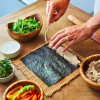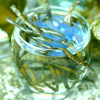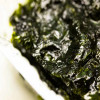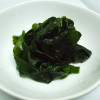Find the continuation of our first article on living food, the heart of our profession !
More than twenty years of practice have allowed us to observe that it is much easier, more pleasant, and more effective to suggest to people who wish to eat more healthily to gradually integrate new foods into their usual diet. This approach helps avoid falling into restriction and frustration, which are sources of long-term failure. As Dr. Frederic Bisci, a physician who has been consuming a 100% raw and plant-based diet for over 50 years, explains, it is highly discouraged for beginners to consume 100% raw food. The most fruitful long-term practice is to add the following new categories of foods to your diet before embarking on the preparation of more elaborate dishes:
- freshly squeezed juices
- sprouted seeds
- algae and microalgae
- lacto-fermented vegetables
Why consume freshly pressed juices ?
Start your journey by consuming freshly pressed vegetable and fruit juices daily. Fresh juices contain active enzymes that pasteurized juices lack. With the latter, it is the body that has to provide them, making digestion more complex and requiring more energy from the body, which then has less time and energy to cleanse itself.
Try consuming 2 glasses of fresh juice per day for 3 weeks and note the gradual disappearance of minor health issues that you had eventually gotten used to out of resignation or ignorance.
After trying dozens of juicer models in France, abroad, at home, and at friends' places for two decades, we are going to introduce a revolutionary juicer in November 2022. It is easy to use (you can put whole apples in it), makes juice quickly, is robustly built, and easy to clean.
What are sprouted seeds used for ?
These are true cornucopias of nutrition, encompassing all nutrients. Whether used daily as a salad base for the most productive and easy-to-grow varieties (alfalfa, clover, fenugreek, sunflower, buckwheat) or to spice up your dishes (broccoli, radish, mung beans, basil, garlic, arugula, chia, watercress), sprouted seeds are health blessings.
The process of seed germination indeed leads to a true predigestion of the seeds' macronutrients. These macronutrients, which include lipids, proteins, and complex sugars, are predigested into fatty acids, amino acids, and simple sugars. Additionally, certain enzymes and vitamins appear during this transformation, intended to provide the future plant with all its vitality and to give your body the energy to cleanse itself.
Sprouted seeds are fun, inexpensive, and easy to produce at home, both in summer and winter, with a classic sprouter if you can be consistent with daily watering, or an automatic one if you prefer more convenience. This way, you'll have fresh and living foods that are easy to incorporate as you wish !
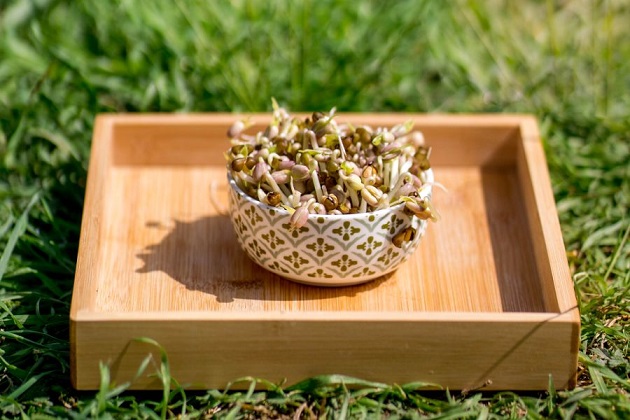
How to eat seaweed and microalgae ?
In France, we have an exceptional source of high-quality wild seaweed. Harvested particularly in the Roscoff region (Brittany) in an area designated as a UNESCO biodiversity reserve, seaweed is very easy to preserve and incorporate into your daily diet, as Asians do.
As the very first links in the marine food chain, algae feed through osmosis and do not accumulate pollutants (often fat-soluble), unlike shellfish, which filter, and fish, which concentrate them.
Their content of mineral salts and trace elements is exceptional, and their levels of proteins and amino acids surpass anything found in the animal kingdom. The same goes for freshwater microalgae such as spirulina, chlorella, and fresh Klamath algae, the three undisputed stars that need no introduction and are among the best health assurances one can obtain if consumed in small quantities daily.
To regularly consume seaweed in small quantities, the best option remains seaweed tartare, a great condiment you can make at home from freshly harvested seaweed. You can also find a ready-made fresh one in the store.
What are the benefits of lacto-fermented foods ?
Unlike cooking or pasteurization, which decrease the quantity and quality of nutrients in foods, lacto-fermentation is like germination: it is a transformation process that enhances the foods! They even gain new categories of nutrients that were absent before the process.
Lacto-fermented foods contain a significant amount of friendly bacteria that colonize our intestines and help maintain optimal health and a strong immune system. They also contain a large number of enzymes.
Lacto-fermented foods strengthen what is known as the gut microbiota, which has a significant impact on our physical and even mental health. Recent studies indeed mention the influence of the quality of the microbiota on numerous pathologies: various neurological disorders ranging from stress to depression, autism, Alzheimer's disease, obesity, and more.
Lacto-fermentation provides live probiotics, which strengthen the gut microbiota and thus facilitate the digestive process, indirectly leaving time and energy for detoxification! Try our dulce sauerkraut made to our specifications, which combines lacto-fermentation with all the health benefits of seaweed.
We can distinguish two forms of lacto-fermented foods:
- Fermenting raw vegetables in jars, the most well-known being raw sauerkraut, which is easy to buy in organic stores. There are many lacto-fermentation recipes; you just need to be patient as it is a process that takes a few weeks. To get started, we also offer complete fermentation jar kits with airlocks to prevent overflow.
- Lacto-fermented drinks like kefir or kombucha are lively and fun to prepare at home, and they can advantageously replace other pasteurized beverages.
How to make an easy and quick raw food recipe ?
Raw and living makis
Ingredients for one roll:
- 1 sheet of dehydrated nori
- 1 cup of sunflower pâté: 100 g of sunflower seeds soaked overnight and blended with a carrot, 1/4 of an onion, and some salt (if this preparation is not available: a mashed avocado)
- 1 cup of grated carrots or raw sauerkraut
- cucumber or bell pepper sticks
- 1/2 cup of sprouted seeds

Preparation:
- Place the ingredients on the nori sheet in a horizontal line so that, if you cut the roll at any point, you will get an identical slice section.
- Moisten the edge of the sheet farthest from you.
- The first roll is the most delicate! Make sure the sheet is tightly rolled so that the roll holds together, then finish by sealing it on the damp edge.
- Let the roll rest for at least 5 to 10 minutes before cutting it with a sharp serrated knife or a ceramic knife (this will soften the nori sheet a bit and make it easier and cleaner to cut).




